The Fuji X100f is the fourth iteration in the series. I had the original X100, but since then we’ve seen the a number of changes and additions to the design, first through an ‘s’ model, a ‘t’ model and now the ‘f’. The series of cameras has been consistently and quite strongly representative of Fuji’s reputation for listening to their users, I just can’t help wondering if they have listened a bit too much…
I remember my experiences with the original X100 with a mixture of fondness and huge frustration. My main issue with it was the autofocus – it was slow and quite stunningly unreliable. It did get slightly better throughout the process of Fuji’s iterative firmware updates, but ultimately never really felt that satisfactory. There were a couple of other issues I remember with the original X100 too – they messed with the digital depth of field scale part way through its lifecycle and it had fairly limited auto-iso functionality.
A circle of confusion
When Fuji released the X100 the digital depth of field scale was based on the standard 0.03mm circle of confusion that film camera lenses have their depth of field scales based upon. If you don’t know what I’m talking about here, have a read of the last few paragraphs of this piece of content I wrote for Ilford’s Learning Zone on their website. I actually got on just fine with this 0.03mm CoC based scale, unfortunately at some point in the process of firmware updates Fuji changed the scale to be based off a smaller circle of confusion – probably 0.015mm.
The impact of this is a digital readout that illustrates a much more narrow band of focus. With high resolution digital sensors where the camera users might have the temptation to zoom to 100% in their software packages, this smaller circle of confusion makes a certain amount of sense. But to those of us who tend to view our images as a whole from an appropriate viewing distance, this change made no sense and rendered the scale an entirely useless feature.
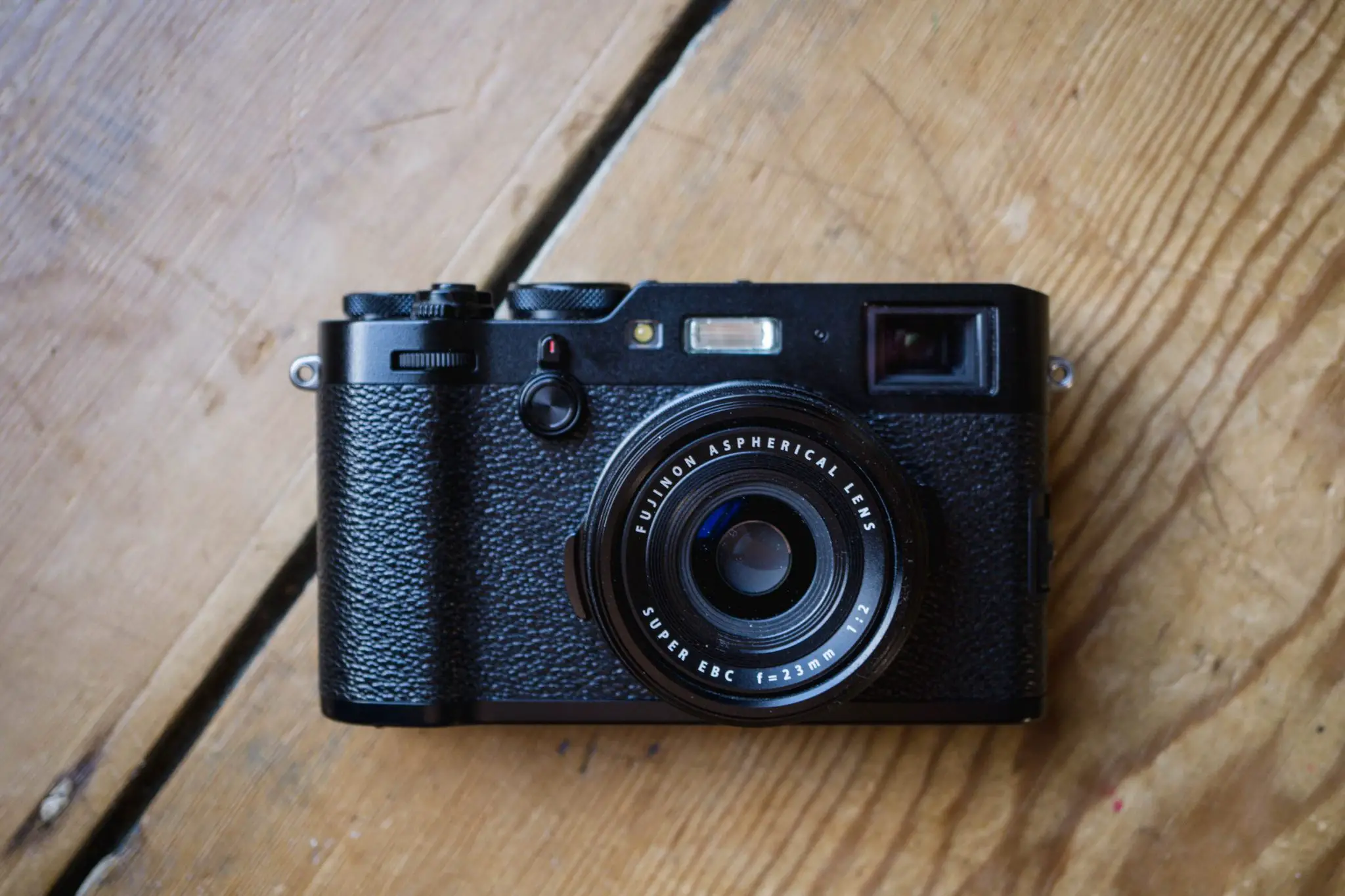
I actually talked to the folks on the Fuji stand at the photography show about this. It didn’t really go how I’d have liked – they had no idea what I was talking about, mocked me a bit for being a geek, and attempted to placate me by giving an X shaped key ring. I’m not even joking. They probably had a point about me being a geek.
I can’t entirely remember what my issue with the auto-iso feature was, but I suspect it didn’t let me set a lower limit to the shutter speed. Whatever, it was these issues that eventually saw me move on the original X100 – and despite all the talk of massively improved autofocus etc on newer models, I’ve never been tempted back. Until I had a go with the X100f at the photography show earlier this year – though even then I didn’t bite the bullet; as awesome as it seemed there was something about it that just didn’t sit well with me.
A camera loan
I recently spoke to Fuji about loaning me a camera for review. They agreed too, then subsequently ignored me – I did link them to my Sony A7Rii review, so I do wonder if it’s cynical nature put them off talking to me. What’s possibly more likely is that they didn’t read it, and I’m just background noise in a sea of people wanting to borrow cameras. Either way, the camera I’m basing this post on was in fact loaned to me by a chap called Adam. Thanks again Adam! Of course, my intention when borrowing the camera was to write a full review – unfortunately I’ve not felt inspired to do so, largely because in use I’ve found that this latest addition to the series just doesn’t have enough of the ethos I found and enjoyed in the original X100 concept. Instead it’s inspired my to write a few words on a bit of a paradox I find in the nature of progression with regard to digital cameras.
Looking back at the basic X100 concept
The basic concept of the Fuji x100 series is sound. It’s a small body with a low profile 35mm f/2 lens. The mk1 version was the first digital Fuji to adopt the idea of having a dedicated aperture dial on the barrel of the lens and a shutter speed dial on the top of the camera. It also had a brilliant viewfinder that could be switched from digital to a real viewfinder with superimposed parallax correcting digital frame lines. With the success of the x-pro, x-e, x-t etc series cameras it’s hard to imagine that before the X100 Fuji were known for shoehorning their market disrupting sensors in to Nikon mount SLRs, and little point and shoot cameras like the excellent F30. But whilst these cameras were very nice, the X100 really took Fuji in a new direction and arguably catapulted their reputation upwards.
Simplicity was key
The beauty of the original X100 was its simplicity. In a world where Leica were the only players in the digital rangefinder game, as well as being the only company to offer a digital camera that offered a very simple user experience, the Fuji X100 felt like a really positive step in the right direction. In fact, at the time, Fuji were were often compared to Leica – or at very least, lines of similarity were drawn in their approaches to product design. Say what you like about Leica, but this definitely didn’t do Fuji any harm.
Regular readers will perhaps see why I bought the X100. I wasn’t quite as obsessed with simple gear as I am now, but the desire for kit that gets out of my way as a photographer has always been there. Cameras back then weren’t even as complicated as they are now – in those days (7 years ago), largely speaking buttons on cameras had specific features assigned to them. These days it’s rare to find a camera that doesn’t have a whole series of customisable unlabelled buttons – tech “progresses” fast!
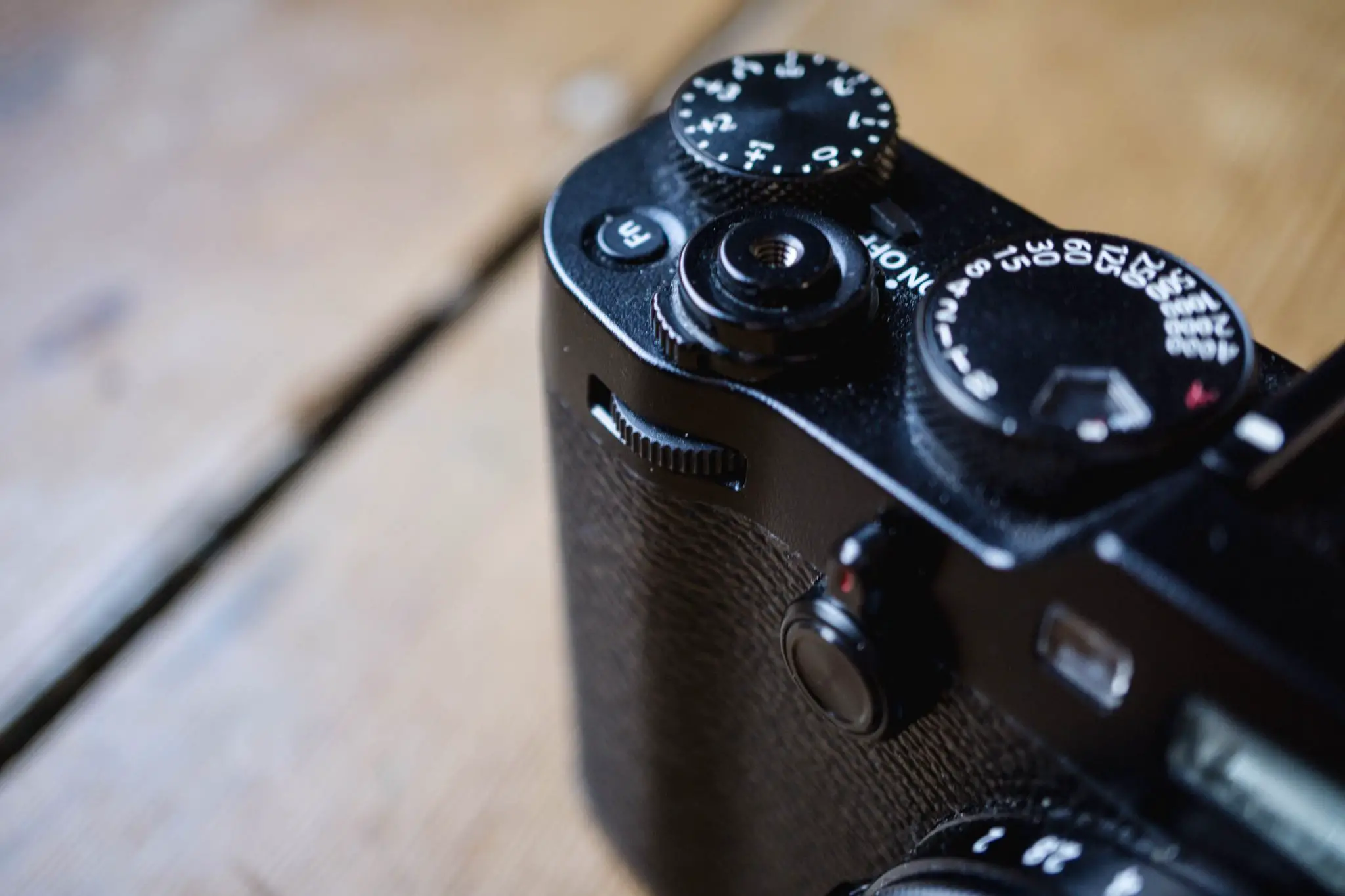
Not quite perfect
Of course, when Fuji released the original X100, whilst there was a lot of rave reviews, there were also cries from most directions about the slow autofocusing, limited auto-iso functionality and the depth of field scale. I remember there being all sorts of other complaints about it too – though none beyond my own have stuck in my mind. Regardless of the specifics, Fuji had complaints… And you know what, they actually listened to them. To kick off, as mentioned above, firmware updates saw the depth of field scale being updated, they even managed to improve the autofocus (a bit) too.
In time they eventually brought out the X100s, and then the X100t. Each model “fixing” more of people’s issues and complaints. I don’t have any motivation whatsoever to go back and scout through feature lists and upgrade specs to work out what happened when, but a lot did happen. In fact, so much has happened, that when I pick up the X100f – whilst the family line is of course very evident – I feel like something very key to the success of the original version has been lost.
Too much listening
To me, it’s seems as though Fuji might just have listened too much. I wanted better autofocus, I wanted better auto-iso features and I wanted quite specifically the option to be able to set the circle of confusion to 0.03mm so the depth of field scale made sense in my world. And you know what, the X100f provides me with all of those things. The option for switching between the two different DOF scales is exactly what I suggested to the bewildered folks on the Fuji stand – if I had even half a suspicion that they understood what I was saying I might have tried to take some credit. But they really didn’t, so I guess I wasn’t the only one who had that frustration.
The problem is, some other people also wanted auto-iso presets, and the ability to be able to select those presets via a wheel under their forefinger on the front of the camera. Someone else wanted an extra wheel on the back of the camera, and an additional directional joystick to add to the direction pad too – I could go on.
None of these requests are that unreasonable by themselves, but combined together they make for a camera that’s so profoundly more complex than the original X100 that it’s somehow lost a whole chunk of its charm. It’s a better camera, but somehow simultaneously, it’s also worse. I even read a rumour that Fuji’s next direction is to start adding more high end video features to their cameras.
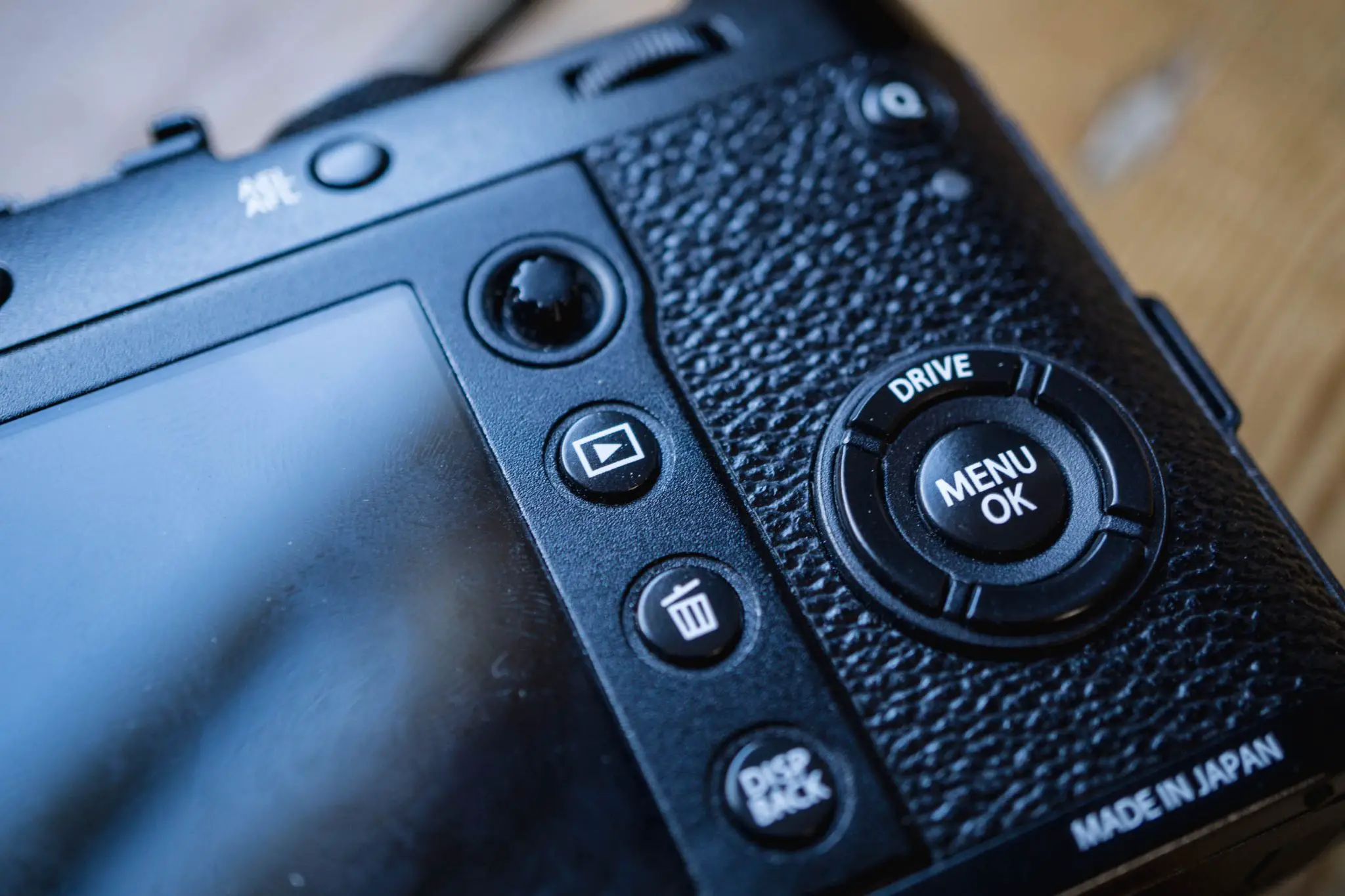
Too many solutions
Credit to Fuji, they have tried to keep hold of the core values of a camera that works in a logical easy to understand way – it still has the proper shutter and aperture controls – but in adding every feature under the sun I can’t help feeling that they’ve muddied the waters. Functionally the X100f feels similar to the original, but thanks to the overwhelming sense that its design has just tried to solve too many user issues, the X100f feels too complex, and in some ways it’s abundance of features prevent it from getting out of the way as a camera in use. Without wanting to sound like a stuck record, there are just too many buttons, controls and dials for it to feel as intuitive and fluent as the original camera did.
“Just switch off the controls”
Of course, the logical response to this complaint is to suggest that I disable the controls I don’t wish to use – this was suggested to me by a lot of people in response to my A7rii review. In highly customisable camera like these, this is an option! But, as I talk about in my post about the lure of the uncomplicated camera, for me there is an inherent lack of satisfaction in this.
Not everyone will feel the same as me here, as my opinion comes down my personal desires from cameras combined with other strong feeling I have toward Industrial Design. But rest assured, at least in the case of the latter, I’m not alone in these feelings, in fact there are entire product design ideologies that revolve around my desires.
Keep it simple, stupid
Just to go off on a small but relevant tangent for a moment – If you are unaware of Dieter Rams famous “10 principles of design” or the “KISS principle”, they are well worth looking up and reading about. Rams’ most famous Design principle is “as little design as possible”, and the KISS principle “Keep It Simple, Stupid”, both come from the same place. I have my own terminology around these principles too – I call it “simple up” design.
I’ve talked about this many times on this blog, but the basic premise of these ideas and principles is that good design involves “just enough” features and functions; the minimal required for something to function well. The opposite of this is what I call “complicated down”. A complicated down approach to design involves packing every possible feature or function in to something through the desire to give every possible user a path to their individual ideal user experience. A sort of “chuck enough shit at a wall and some of it will stick” approach.
Neither approach is wrong, both just come from different design ideologies. I suspect it’s clear that my preference is for “the simple” up approach! I do have one strong argument for this too, and fundamentally I feel that it explains the mess that camera manufacturers are getting into by so heavily over-specifying their cameras. You see, if you add more features to a camera, for every feature you add, you’re opening another can of worms. Any new feature in effect provides a tantilasing look at what could be if they’d have just added that bit more to that feature.
Take the concept of the built in light meter as an example. These meters started out as tools for judging the light by pointing the camera at the subject. Given the many years of progress since that initial invovation, and we now have intelligent multi segment metering that makes decisions based what it perceives the subject mater to be… … and three auto-iso presets built into the Fuji X100f. Each iteration from that initial simple solution to the very complex solutions we now see today have been driven by by people – either product designers, or users – saying “that’s great what you’ve done, but what if it also did this, and that, and this, and that”. The beauty of this design ideology in a capitalist world is that it continues to add more to the offer, it continues to dangle more carrots in front of the noses of the consumer, and therefore drives more sales and more tantalising looks at what could have been if only those ten new features all did ten other new other things. This leads naturally on more “progression”, more features, and more tantalising possibility, ad infinitum.
But of course, if you were to ask a Leica M9 user if they feel the meter in their camera would be better if it intelligently knew the subject matter the camera was pointing at, they’d probably give you a funny look. Yet I’d bet £10 someone in some review somewhere is raving about how useful having three auto-iso presets in the X100f is. Neither person is wrong, they just have very different priorities and very different desires for their gear. Neither M9 or Fuji X10f is a better camera, it simply comes down to the fact that some people embrace the endless possibilities of “progression”, whilst others prefer the limitations and elegance of simplicity.
My disappointment
All this is a slightly long way round my trying to explain why for some of us – myself included – manufacturers adding more and more features to a camera like the Fuji X100 is frustrating – especially as someone who actually wished for some of those features myself. I suppose I wanted Fuji to only listen to people like me who wanted simple cameras. As it turns out, it would seem they didn’t find a big enough niche in that market. I am, I guess, one person in a minority of people who have similar desires.
I think I just had different hopes for Fuji. I hoped that was another company alongside Leica that could design and bring to market cameras designed for photographers who’s minds are are a little more keyed into 1950-80’s film cameras. That was after all what the original X100 felt like it offered – it looked like one for a start! Long term, it seems it wasn’t to be.
Of course none of this means that the Fuji X100f is a bad camera. It is in fact quite excellent. It’s much easier to understand and use than my Sony A7Rii, takes great photos, and as I said, at its core still remains the same features that I loved in the original. I still love the way the viewfinder works in these things – especially now they’ve added a little superimposed digital screen inside the real viewfinder to aid focus…
My dissatisfaction in progression
…but don’t worry, I am aware that what I’ve just said contradicts all my previous ranting – but that in itself is my point. It really does seem that there is no pleasing me when it comes to “progression” in digital cameras! As far as I can see into the future, I will never be satisfied by the consistent addition of more features. There will be some features that I like perhaps, but there will be a lot more that I don’t need, many that don’t like and even more that will feel like they get in my way as a photographer. Progression in camera tech just doesn’t feel like a positive thing to me – the Fuji X100f being a perfect example of how elegant concept can be jeopardised.
But, actually, the funny thing is, the dissatisfaction I find in progression translates to even those who revel in all the new features the latest gadget-camera brings. Even they are never entirely satisfied – there’s always something missing, or something that can be improved or built upon…
Thanks for the loan Adam… Now where did I put my Leica M9…
Some more photos I took with the X100f can be found here
Share this post:
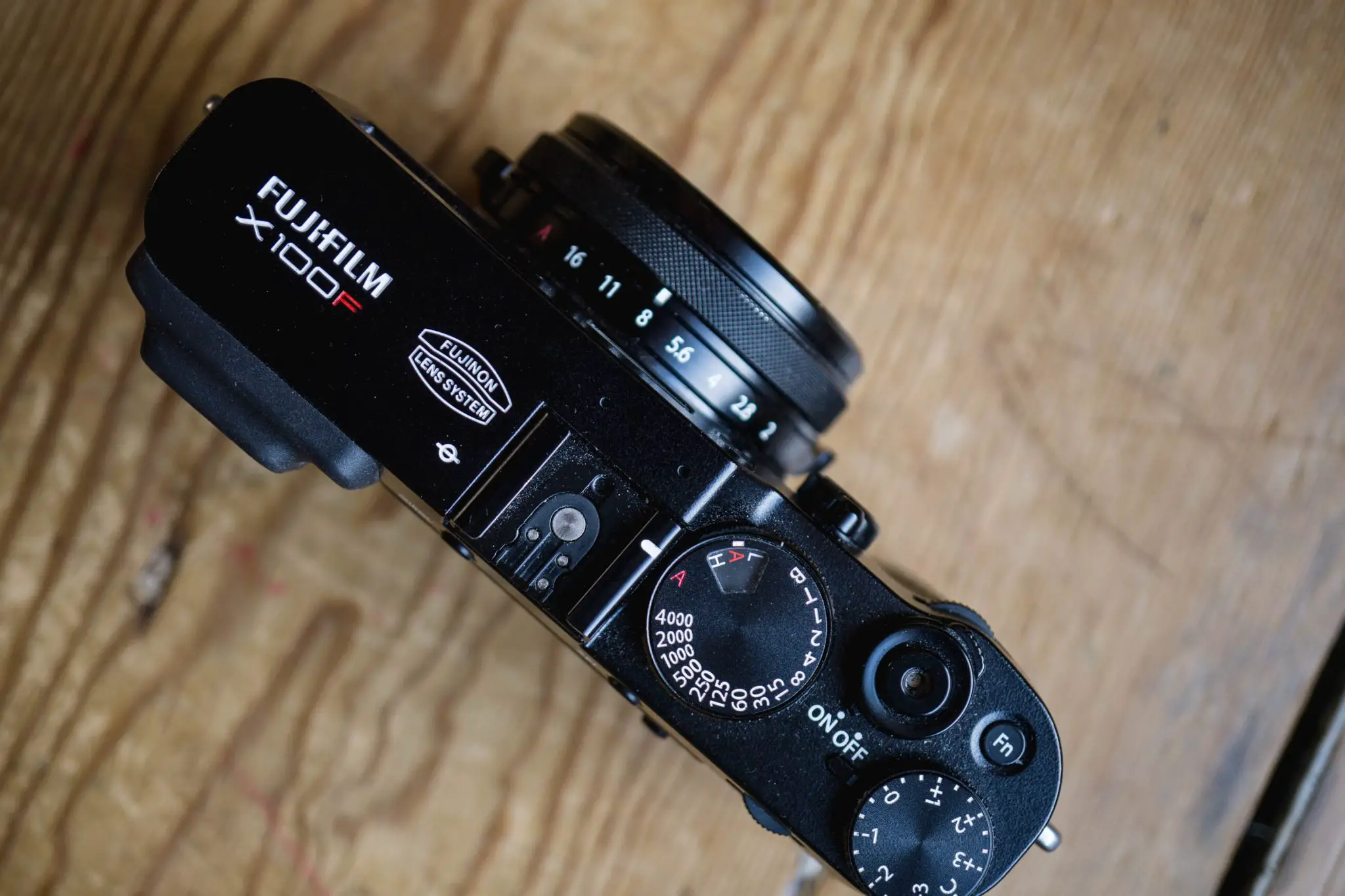




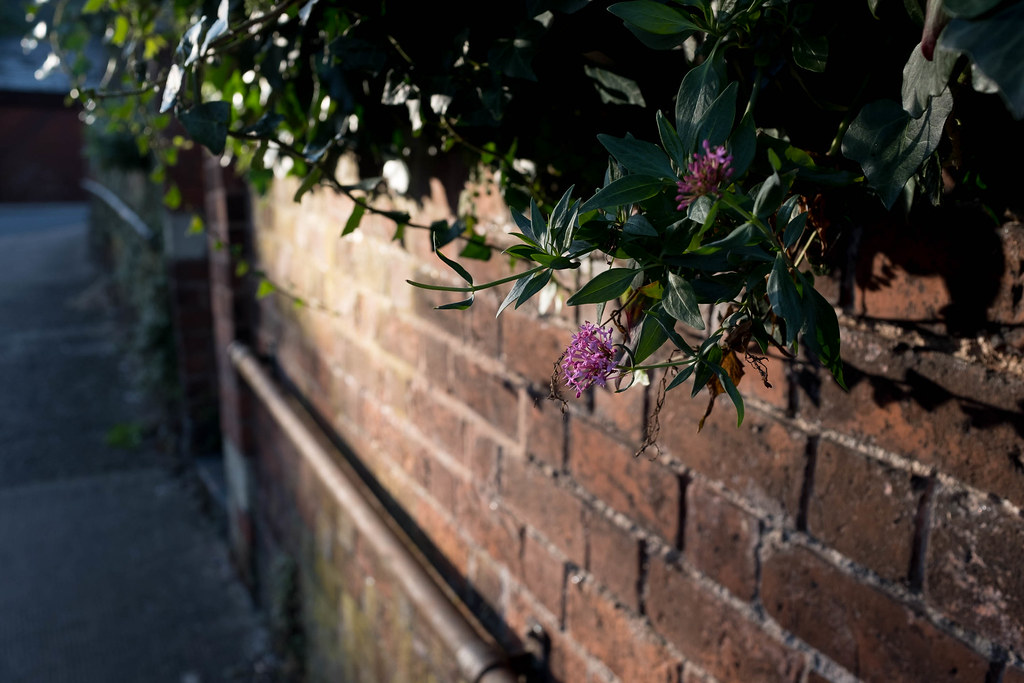

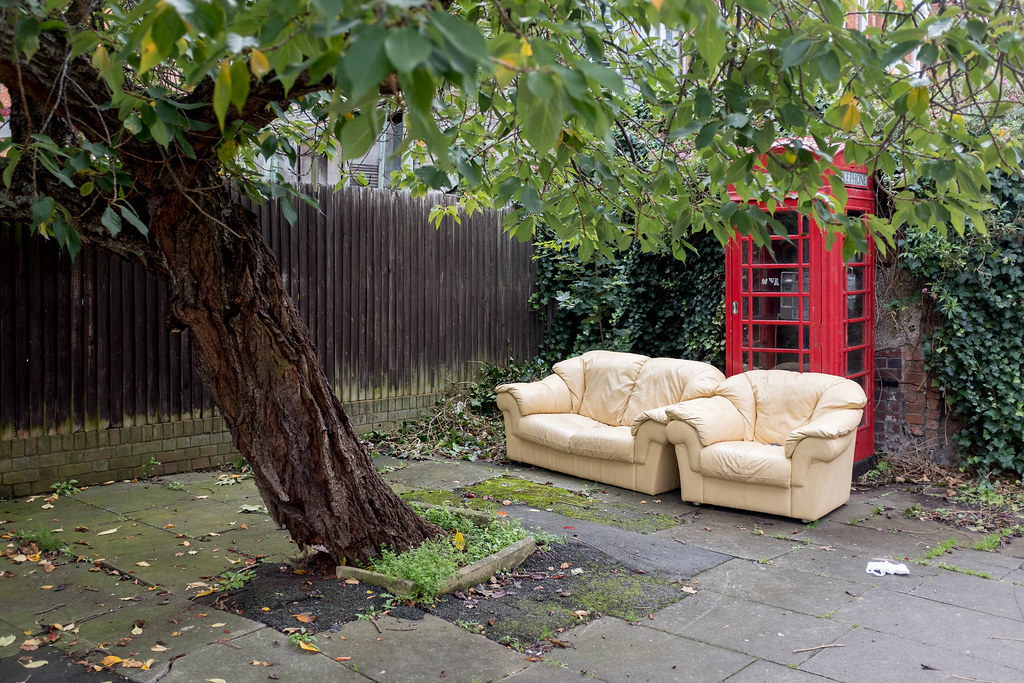









Comments
Christos Theofilogiannakos on Fuji X100f Review – Has Fuji lost sight of the elegant original concept?
Comment posted: 14/10/2017
Comment posted: 14/10/2017
Stig on Fuji X100f Review – Has Fuji lost sight of the elegant original concept?
Comment posted: 14/10/2017
Comment posted: 14/10/2017
Richard on Fuji X100f Review – Has Fuji lost sight of the elegant original concept?
Comment posted: 14/10/2017
I work in a design-based industry and simplicity in design is a subject close to my heart. It drives me nuts that car manufacturers, for instance, keep adding features to vehicles that no one ever said they wanted. I think that it's just to have some other gimmick to advertise, thereby making the new model "better" than your current model. Seems to be the exact same situation in the camera world.
For ages I shot using only a tiny, pocket-sized Nikon digital camera. But then I convinced myself that I needed a better (read more richly featured) model. Above all I wanted full PASM control. So I bought one and still find myself shooting 99% of the time in P mode. But hey, y'know, GAS, right?
I do like the X100 series. For the retro looks, simplicity of a fixed focal length lens and large sensor. For similar reasons I like the Ricoh GR series too (obviously not the retro looks there though). But I've made a pact with myself that until I've shot with my current Nikon to the limit of its capabilities, and that it is affecting my creativity as a photographer, I'm not going to upgrade. And then as and when I do, it'll be for the creative capability of the new camera, not because it is rich with features I don't need.
A noble sentiment for sure, but it isn't stopping me from window shopping on the internet all the time!
Comment posted: 14/10/2017
Steve Wales on Fuji X100f Review – Has Fuji lost sight of the elegant original concept?
Comment posted: 14/10/2017
It seems to me that the majority of the digital 'computer' cameras' on the market are designed by the marketing people and/or computer programmers working for the company, who haven't got a clue what photographers want and need in a camera. And there seems to be this false belief that more is better - maybe learnt from the washing powder companies of old proclaiming the updated washing powder washes whiter than the stuff they sold you previously. Cameras should perform a simple act of regulating the amount of light hitting the sensor, coupled with the ability to focus or not the light patterns through by way of a lens, and to regulate the DoF. This is why I choose the Leica M, both digital and analogue; they are simple to use, and even the digital M is intuitive having a fairly simple menu system that can be mastered in a short period of time.
Comment posted: 14/10/2017
Aivaras on Fuji X100f Review – Has Fuji lost sight of the elegant original concept?
Comment posted: 14/10/2017
So I bought fuji X100F together with teleconverter and was thinking that this small combination could work as main kit for me (I'm hobbyist, not pro, so don't have to specialise to much, so theoretically it could work out).
And guess what? It appeared to me that my Sony A7RII / manual lens / workflow solution was is fact "simpler camera" in Hamish terms to live with...
Comment posted: 14/10/2017
Comment posted: 14/10/2017
Steven on Fuji X100f Review – Has Fuji lost sight of the elegant original concept?
Comment posted: 14/10/2017
I do get the sentiment though, and I think the idea of the Fuji-X photographers is to actually provide feedback so that Fuji actually develop a camera that has the features and usability that photographers want. The idea is a good one, at my place of work I am constantly having to use badly designed systems and processes that have been developed by people who would never use them, otherwise they would see how ridiculous they are. Maybe their implementation of adding what 'photographers' wants needs some refining, but it is a welcome change in a development process.
Comment posted: 14/10/2017
dtbsz on Fuji X100f Review – Has Fuji lost sight of the elegant original concept?
Comment posted: 14/10/2017
Comment posted: 14/10/2017
Neil on Fuji X100f Review – Has Fuji lost sight of the elegant original concept?
Comment posted: 14/10/2017
I do applaud Fuji for making these cameras, essentially affordable rangefinder-ethos type cameras. You’ll no doubt get loads if responses, yourself included I see, stating why they prefer a digital m or film m over the x100 but not everyone can afford a Leica or the film/Dev scan costs addocated with shooting a rangefinder.
Comment posted: 14/10/2017
George Appletree on Fuji X100f Review – Has Fuji lost sight of the elegant original concept?
Comment posted: 14/10/2017
The thing is we changed some words. And the camera too. So I shot with it and he with mine.
Pleased to meet that man and glad to have that opportunity.
Perhaps it sounds presumptuous, but I wouldn't exchange my camera for that jewel. Not even without the 100% leather case it had. It is too bulky, too elegant, too really very too something.
Fuji's doing good
giuseppe pagnoni on Fuji X100f Review – Has Fuji lost sight of the elegant original concept?
Comment posted: 15/10/2017
1) a much more responsive user interface (hated the slow/temperamental wake up times). Solution: pack a latest-generation processor (which should also be less-power hungry and thus improve battery life), and/or hire better firmware programmer
2) use a full frame sensor with 24-36 megapixels: that will also allow more cropping power, which is at times necessary with a fixed 35mm lens
3) develop a new full-frame 35mm lens. I understand that Fuji is invested in APS-C lenses, but this would be a one-time effort and a well-worthy one
4) improve the fly-by-wire manual focusing mode, so that it is more responsive
5) get rid of the simulation modes, but give Adobe access to the demosaicing algorithm (for God's sake, it would be about time!), so that RAW conversion in Lightroom becomes flawless (alternative: just use a Bayer layering)
6) include a RAW histogram, or at least blinkies for over/under exposure (that should signal, although, the real recoverability limits of the sensor)
7) not sure about the real usefulness of the OVF: maybe just use a really good EVF and be done with it
7) price it aggressively within $2000-$2500 price
It is obvious I don't understand marketing strategies, as it seems to me that a product like this would literally fly off the shelves. For one, it would draw the legions of street/documentary/travel photographers who love the idea of the analog M6 summicron 35 combo, but are unwilling or unable to pay the absurd Leica boutique sticker price for the digital version. Leica had a good product with the Q (in 28mm): I don't see why Fuji couldn't make a 35mm version of the same idea, with a much more affordable price.
Comment posted: 15/10/2017
Comment posted: 15/10/2017
Comment posted: 15/10/2017
DJ. on Fuji X100f Review – Has Fuji lost sight of the elegant original concept?
Comment posted: 15/10/2017
Comment posted: 15/10/2017
Alan Connelly on Fuji X100f Review – Has Fuji lost sight of the elegant original concept?
Comment posted: 15/10/2017
Comment posted: 15/10/2017
Richard Taylor on Fuji X100f Review – Has Fuji lost sight of the elegant original concept?
Comment posted: 15/10/2017
I do love my x100f, but have learn't to stick to what I can dial in directly on the classic controls and one assignable having gone down too many rabbit holes following various popular users street and more general settings and control guides. After the first few weeks of experimentation the only setting I was confident of getting to quickly was 'Factory Reset'. I want to spend my time looking through my camera taking images, not looking at the back wondering which button got me to this menu I didn't mean to be in.
Comment posted: 15/10/2017
Andrew on Fuji X100f Review – Has Fuji lost sight of the elegant original concept?
Comment posted: 15/10/2017
Comment posted: 15/10/2017
Peter on Fuji X100f Review – Has Fuji lost sight of the elegant original concept?
Comment posted: 16/10/2017
Comment posted: 16/10/2017
walker on Fuji X100f Review – Has Fuji lost sight of the elegant original concept?
Comment posted: 16/10/2017
Jon herr on Fuji X100f Review – Has Fuji lost sight of the elegant original concept?
Comment posted: 16/10/2017
Comment posted: 16/10/2017
john canavan on Fuji X100f Review – Has Fuji lost sight of the elegant original concept?
Comment posted: 18/10/2017
Comment posted: 18/10/2017
john canavan on Fuji X100f Review – Has Fuji lost sight of the elegant original concept?
Comment posted: 18/10/2017
Comment posted: 18/10/2017
Andy on Fuji X100f Review – Has Fuji lost sight of the elegant original concept?
Comment posted: 18/10/2017
Comment posted: 18/10/2017
Graham Ashton on Fuji X100f Review – Has Fuji lost sight of the elegant original concept?
Comment posted: 19/10/2017
With the v2 firmware the original X100's autofocus speed is really quite acceptable, and whenever I'm shooting fast moving targets I pre-focus (with the rear button) and let depth of field do the job (I'm not shooting kids at close range). So I have no focus issues at all, and it's streets ahead of the auto focus performance on some (still very popular) film compacts.
As for autofocus accuracy, I don't find it misses the target at all. I did learn that it's best at focusing on horizontal lines, and can struggle with vertical, but once you know about that it's easy to persuade it to pick up whatever you're aiming at.
The original X100 menus are a little slow to navigate, which discourages me from diving into them and changing stuff. As a result I've found I tend to use it much more simply than other digital cameras, only tweaking the settings that I've got mapped to the Fn and RAW buttons (ISO and film simulation, respectively).
I find the only issue with it setup like this is that I can't toggle auto ISO on and off at the press of a button. Usually that isn't a problem though, as I'm usually using it in aperture priority and am happy to let it ramp the ISO up to 3200.
So in use, it feels like a wonderfully simple camera. It genuinely reminds me of using a film camera. I only think about framing, focus/dof and exposure when I'm using it. It's my joint-favourite digital camera (the other competitor being the Ricoh GR).
Comment posted: 19/10/2017
Gray on Fuji X100f Review – Has Fuji lost sight of the elegant original concept?
Comment posted: 21/10/2017
Comment posted: 21/10/2017
ANDREW CHESTERMAN on Fuji X100f Review – Has Fuji lost sight of the elegant original concept?
Comment posted: 22/10/2017
Comment posted: 22/10/2017
Alan Houghton on Fuji X100f Review – Has Fuji lost sight of the elegant original concept?
Comment posted: 22/10/2017
c0ldc0ne on Fuji X100f Review – Has Fuji lost sight of the elegant original concept?
Comment posted: 23/10/2017
On the back of the original X100, I count 7 push buttons, a D-pad, a control wheel and a diopter adjustment). The X100F has 6 push buttons, and the same D-pad, control wheel and diopter adjustment.
The number of controls on the top plate is the same between the two models (unless you want to count the F's combined shutter speed / ISO dial as an extra control) and on the front, the F gained a second control wheel. The AF mode selector is the same on both cameras.
So the F gained a control wheel, and lost a push button. How does that translate to "too many buttons, controls and dials"?
Comment posted: 23/10/2017
Valdo on Fuji X100f Review – Has Fuji lost sight of the elegant original concept?
Comment posted: 24/10/2017
Fuji or other japanese camera manufacturer will newer accept the
thesis “Simplicity is the Genius”.
Steve Boykin on Fuji X100f Review – Has Fuji lost sight of the elegant original concept?
Comment posted: 24/10/2017
Steve from the RPF. Really nice article!!! However, I find the X100F really simple. I turn off the backscreen. I can control all three parts of the exposure triangle with dials on the outside of the camera. I have always felt if you are spending time looking at screen reviewing what you have taken you probably didn't spend the time you should have spent originally looking at what you were photographing. The only thing I have displayed in the viewfinder is the aperture, shutter speed, and ISO. I couldn't tell someone how to read a histogram if my life depended on it. I'm probably 50% EVF and 50% OVF depending on how far away I am from the subject. I don't really ever have to dive into the menus because everything I need can be controlled manually. Would it be better if it was manual focus only- absolutely, but that would inevitably make it cost more because it wouldn't sell as many units. It would probably cost more to manufacture too. I think it's unfortunate because there are probably a number of working class people like me who enjoy photography as a hobby that would like a fully manual digital camera but don't have $6,000 to spend on a body and $1500 per lens. Sadly, the reality is there probably wouldn't be enough of us to make a profit on it if it was priced where I could afford it. So for me something like the X100 is the next best thing.
Also- I thought Voigtlander stopped making the 40mm in K mount. Is that wrong?
That Yashica clone looks interesting. I just had an Electro restored and am on frame 26 of a 36 Tri-X. I got the camera for $20 and spent $65 on new light seals, some pad thing being replace, a battery adapter, and a general CLA. It's actually a pretty nifty camera. The veiwfinder is very nice. I do wish the lens was a bit wider.
Nice web site. This aricle was the first time I have seen this.
Comment posted: 24/10/2017
Comment posted: 24/10/2017
Comment posted: 24/10/2017
Michael Kelley on Fuji X100f Review – Has Fuji lost sight of the elegant original concept?
Comment posted: 24/10/2017
The X100F is a very simple to understand camera. You can look at the top plate with the camera off and see everything you need to know. Unlike the original X100, you can now see your ISO setting without having the camera on. There's also a joystick for moving the AF point, which is a very intuitive and simplified improvement. Remember having to press the down directional button before you could move the AF point? There was nothing intuitive about that. The rear dial is also a vast improvement over the original sort-of-a-wheel thingy. The buttons have been moved from the left of the screen to the right where they can be accessed more easily with the right thumb. For photography, there is zero need to delve into the menus. The X100F is an affordable ergonomic masterpiece unmatched by anything near this price point. It's a simpler camera to use than the X100. What you are expressing, though, is nostalgia for the authentic X100, perhaps because you hope to seem more authentic as well.
Comment posted: 24/10/2017
Michael Kelley on Fuji X100f Review – Has Fuji lost sight of the elegant original concept?
Comment posted: 24/10/2017
Comment posted: 24/10/2017
Michael Kelley on Fuji X100f Review – Has Fuji lost sight of the elegant original concept?
Comment posted: 25/10/2017
Comment posted: 25/10/2017
Johan on Fuji X100f Review – Has Fuji lost sight of the elegant original concept?
Comment posted: 15/12/2017
Comment posted: 15/12/2017
Dave on Fuji X100f Review – Has Fuji lost sight of the elegant original concept?
Comment posted: 02/01/2018
I have had the x100 S, T and now I'm on the F. I mostly upgraded to the F to get more pixels.
I use the camera Auto ISO, RAW, and AV mode for 99% of my shooting. Usually I have the AV at 4.0 or 5.6. Sometimes it's lower in low light. But I like the DOFs at those apertures. I've never tried to set up custom functions or buttons. I just use the EVF and ride the exposure wheel to get the photos I want. I rarely chimp any more as I don't really need to. I pre-chimp in the EVF.
So, I guess I don't really get your complaints about the DOF scale and it being too fiddly and too many buttons? Once it's set up, it's good to go for me.
Comment posted: 02/01/2018
Terry Hutchinson on Fuji X100f Review – Has Fuji lost sight of the elegant original concept?
Comment posted: 09/01/2018
Comment posted: 09/01/2018
Tony on Fuji X100f Review – Has Fuji lost sight of the elegant original concept?
Comment posted: 26/01/2018
Comment posted: 26/01/2018
oli on Fuji X100f Review – Has Fuji lost sight of the elegant original concept?
Comment posted: 15/02/2018
I came to photography from collecting analog cameras. When i collected them, it was always a great fun to shoot and test them. Now, as i sold many of my cameras and slim down, i also switched to digital photography, because i dont have the room for boxes of prints. Now i realize that Shooting with my FujiX10 is not half the fun of shooting film. Too much adjustments, that let you think more about forcing shadowns or highlights, multifield or integral Metering, AF points, etc. I wish there would be a camera that works as simple like a old yashica or Olympus Rangefinder, without the beeing a expensive Leica. I would get rid of scencemodes, autoiso, Video, HDR, Mulitmetering, countinous AF. Just Aperture,Shutterspeed,Isosetting and Focusrange, everything with dials and knobs. Only a viewfinder(OVF with overlay or EVF), no screen. That would bring me more fun to photography and would be a desireable object, not just a tool. What is closes to this?
Comment posted: 15/02/2018
Functionalist camera design, the Agfa 1035 and the Plaubel Makina 67 - 35mmc on Fuji X100f Review – Has Fuji lost sight of the elegant original concept?
Comment posted: 01/04/2018
TN Args on Fuji X100f Review – Has Fuji lost sight of the elegant original concept?
Comment posted: 08/05/2018
Carl Garrard on Fuji X100f Review – Has Fuji lost sight of the elegant original concept?
Comment posted: 14/05/2018
https://photographic-central.blogspot.com/2016/04/fujifilm-x100t-review.html
Carl
Comment posted: 14/05/2018
A Leica Q Review - by Adam Laws - 35mmc on Fuji X100f Review – Has Fuji lost sight of the elegant original concept?
Comment posted: 09/06/2018
Andrew on Fuji X100f Review – Has Fuji lost sight of the elegant original concept?
Comment posted: 27/06/2018
The built-in neutral density filter is absolutely delightful. I have it mapped to the button in the center of the viewfinder selector and use it often. The stuff you mention like three auto-ISO modes just never even comes into my stream of consciousness as I only use the physical ISO dial and only configured one auto ISO mode. So I’m either in auto ISO or manual, exactly like using my Leica M10 and just as tactile and physical.
THere is only one other potentially gimmicky feature I ever touch, and that is the film simulations. I always shoot in RAW Fine and have one of my d-pad buttons configured for film mode, whcih is mostly on Acros yellow filter. It is nice to be able to switch between film modes for a particular shoot, but I’ve always got the RAW file if I need it though honestly Fuji’s ACROS yellow mode is so good that I rarely do my own B&W conversions from raw with this camera.
WHen I pull the X100F out of the bag the only real difference in use compared to my Leica is the position and feel of the dials and the fact that I shoot autofocus (always use AF-S, center point, focus and recompose) instead of manual (I never liked any focus-by-wire except for that of the Leica X-Vario/X113/Q).
WIth most of those other functions disabled, the X100F gets just about as far out of my way as the Leica M10 does.
Comment posted: 27/06/2018
Matt Byrne on Fuji X100f Review – Has Fuji lost sight of the elegant original concept?
Comment posted: 02/11/2018
Comment posted: 02/11/2018
Vahid on Fuji X100f Review – Has Fuji lost sight of the elegant original concept?
Comment posted: 16/12/2018
I used to have a Leica m 240 with 50mm summicron and I got rid of it because I could not justify carrying £2500 camera with myself to work everyday for casual shooting and as a hobby.
I bought x100f last year after selling my Nikon gears and sold it in a month or 2 and bought the M 240 one and guess what? I just now bought x100f again because I see no other simpler solution other than going back to shooting film or Leica.
When it was film, camera adjustment were shutter speed and aperture, I don't know why no manufacturer can replace the film with digital sensor and add just one more setting/dial for ISO and that's it. Leica has almost done that for years now but even if you could afford paying thousands for it, it just does not feel right to carry such an expensive camera everyday with yourself as hobbyist. Also M9 got that sensor corrosion story which happened on some camera even with the new sensor replacement which increase the risk for such an amount of money
The Leica TL - finding joy in very limited function and purpose - 35mmc on Fuji X100f Review – Has Fuji lost sight of the elegant original concept?
Comment posted: 26/03/2019
Magnus on Fuji X100f Review – Has Fuji lost sight of the elegant original concept?
Comment posted: 30/07/2019
I’d really like a fantastic stills camera in the $1,000 range that didn’t have video, didn’t have a zillion buttons. Just make it small, with a fantastic sensor, processor, and lens. Give me tactile controls (which Fuji is great at) for basic exposure control. Any controls above & beyond the basic exposure controls and the on-off switch should face incredible scrutiny.
I want my modern spin on the Olympus XA or the Canonet QL17. And I’m ok with just spitting out DNG’s and letting me figure out in post whether it should be color or B&W, what white balance to set, etc. None of that is the camera’s job to decide. So I don’t need menus for it.
Comment posted: 30/07/2019
First Frames with the Fuji X100V and some thoughts on why I bought it... - 35mmc on Fuji X100f Review – Has Fuji lost sight of the elegant original concept?
Comment posted: 06/04/2020
Mike Myers on Fuji X100f Review – Has Fuji lost sight of the elegant original concept?
Comment posted: 01/08/2021
I sort of agree with you, but by offering all these choices, many different people with many different desires can make the camera into something more ideal for them, or in my case, me. I read about the new camera, the V, but I decided the F is closest to what my Leica cameras are like (M8.2 and M10). There's a lot of "stuff" that I usually ignore, such as the ability to capture video - but when I needed to record video, I was glad the camera could do it. I'm very happy with my F, and I see I've got a lot yet to learn.
If you find this response, can you please explain how I can select the "circle of confusion" to be more realistic? I didn't know I could do that. Yeah, and that's one more function I don't think the camera "needs", but here I am wanting to do it.....
Comment posted: 01/08/2021
Joaquin Sierra on Fuji X100f Review – Has Fuji lost sight of the elegant original concept?
Comment posted: 22/07/2022